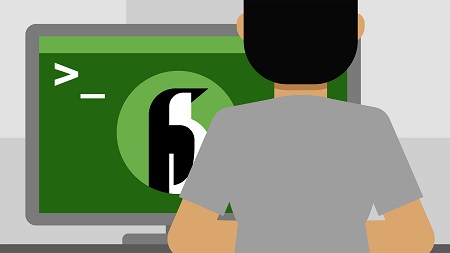English | MP4 | AVC 1280×720 | AAC 48KHz 2ch | 2h 18m | 354 MB
Knowledge of the Linux command line is critical for anyone who uses this open-source operating system. For many tasks, it’s more efficient and flexible than a graphical environment. For administrators, it plays a vital role in configuring permissions and working with files. In this course, experienced instructor Scott Simpson discusses the basics of working with the Linux command line using the Bash shell, focusing on practical Linux commands with examples that help you navigate through the file and folder structure, edit text, and set permissions. Scott also discusses some of the common command-line tools, such as grep, awk, and sed, and command-line apps such as the nano and Vim text editors. The course wraps up with a look at how to install and update software with a package manager.
Topics include:
- What is the Linux command line?
- Writing Linux commands at the prompt
- Finding help for Linux commands
- Copying, moving, and deleting files and folders
- Configuring user roles and file permissions
- Using pipes to connect commands
- Searching and editing text
- Finding system hardware and disk information
- Installing and updating software
Table of Contents
Introduction
1 Learning Linux command line
2 What you should know
3 A very quick intro to Linux
Setting Up Your Environment
4 Creating a Linux virtual machine
5 Windows Subsystem for Linux on Windows 10
6 Following along on a Mac
7 Following along on Linux
8 Using a cloud provider
Command-Line Basics
9 What is the command line
10 How commands are structured
11 Write commands in a shell at the prompt
12 Helpful keyboard shortcuts in the terminal
13 Finding help for commands
Files Folders and Permissions
14 Files folders and navigation
15 A little more about ls
16 Create and remove folders
17 Copy move and delete files and folders
18 Find files from the command line
19 User roles and sudo
20 File permissions
21 Create hard and symbolic links
22 The Linux filesystem
Common Command-Line Tasks and Tools
23 The Unix philosophy
24 Use pipes to connect commands together
25 View text files with cat head tail and less
26 Search for text in files and streams with grep
27 Manipulate text with awk sed and sort
28 Edit text with Vim
29 Edit text with nano
30 Working with TAR and ZIP archives
31 Output redirection
32 Exploring environment variables and PATH
33 Challenge – Extract information from a text file
34 Solution – Extract information from a text file
A Peek at Some More Advanced Topics
35 Find distro and kernel information
36 Find system hardware and disk information
37 Install and update software with a package manager
Conclusion
38 Next steps
Resolve the captcha to access the links!
